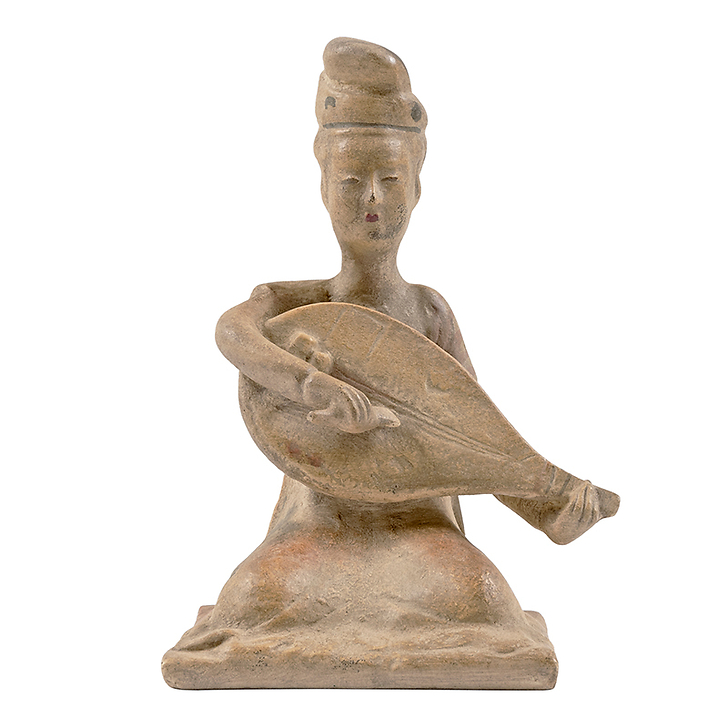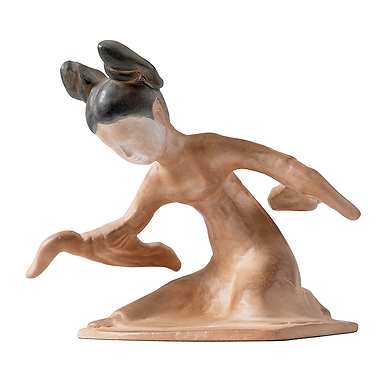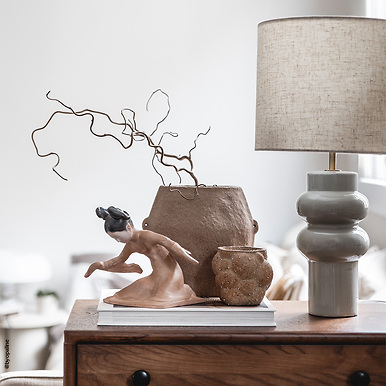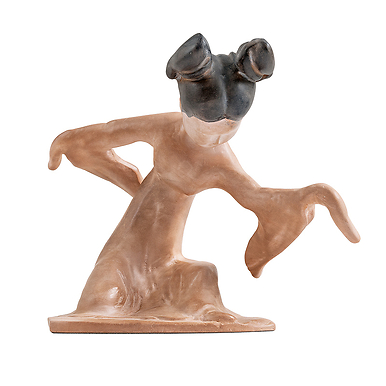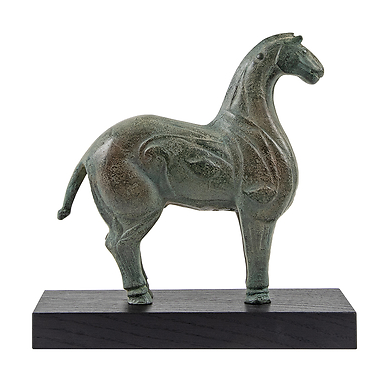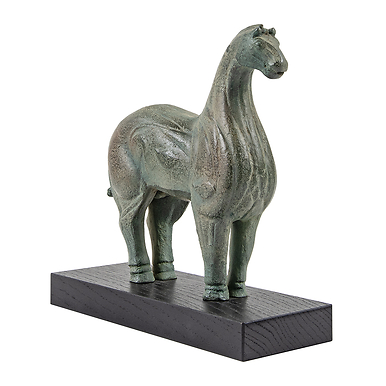Sculpture Female Lute Player
RK007964
Reproduction patinated by hand. Mold made from an imprint of the original work.
The hair of this pipa player is combed into a shell-shaped chignon (luoji) to flatter her fine features. She is sitting on a rectangular terrace and is holding an instrument imported from the Kucha region, a kind of guitar...
Read more
Reproduction patinated by hand. Mold made from an imprint of the original work.
The hair of this pipa player is combed into a shell-shaped chignon (luoji) to flatter her fine features. She is sitting on a rectangular terrace and is holding an instrument imported from the Kucha region, a kind of guitar with four or five strings that are plucked either with the fingers or, as in this model, with a plectrum.
She is dressed in a low-cut bolero and a long skirt, a costume that comes from the same region and was very fashionable in China during the 7th century.
The terracotta is completely covered in a straw-coloured lead glaze, a process that made an appearance at the end of the 6th century and foreshadowed the widespread use of multicoloured glazes, the pride of Tang ceramic art. However, during this period, it was much more common to apply mineral on the clay, using a cold method, whether it was covered with a slip or not. This is what probably led the coroplast, or modeler, to highlight the glaze with bright colours, as can be seen from the traces of red on the side of the dress.
This statuette accompanied the deceased in her tomb, an exact replica, when she was alive, of her home and lifestyle, in which music and dance, enriched by new orchestras, artists and instruments from the oasis of Central Asia, played an important role.
Close
Login to see prices
Sold by GrandPalaisRmn

